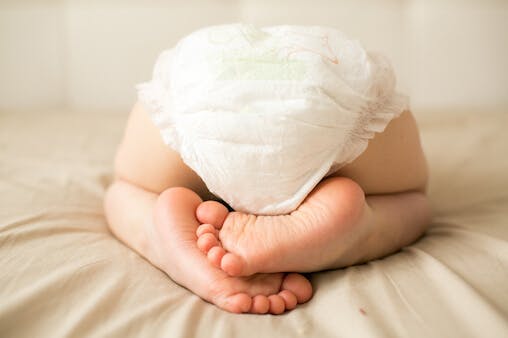Which Diapers Are Better for the Planet?

Those landfill diapers that are so easily tossed into the trash are clearly a major ecological issue. But what about the energy, water, and often chlorine involved in laundering cloth ones? Comparing the environmental impact of different diaper types has been the subject of a number of studies-with differing results often linked to the vested interests of those behind the study.
The largest and most objective study to date was carried out by the Environment Agency, the public body responsible for protecting the environment in England and Wales. The panel compared disposable diapers to home-laundered cloth ones and commercially laundered cotton ones in terms of global warming, ozone depletion, smog formation, depletion of nonrenewable resources, water pollution, acidification, human toxicity, and land pollution. The study did not include what I call hybrid diapers-the reusable diapers equipped with flushable, biodegradable liners.
This study found that overall environmental impact is about the same for all three options they did consider; the biggest impact is on global warming, resource depletion, and acidification. For disposable diapers, the most significant impact comes during manufacture; for home-laundered ones, the primary impact comes from the electricity used in washing and drying; for commercially laundered ones, the biggest impact comes from use of fuels and electricity.
Thus, according to the Environment Agency, if you choose cloth diapers, the first focus should be on reducing the energy used during washing and drying and reducing fuels and emissions during transportation (see Chapter Seven for more information about laundry). If you choose disposable ones, focus first on greener manufacturing, such as used by the Eco-Diapers mentioned previously.
Although the Environment Agency report is more thorough than other analyses to date, it is still quite incomplete. For instance, it looked only at the major brands used-not the greener alternatives. It didn’t look at making choices back at the very beginning of the manufacturing process: at the oil rigs where the plastic liners of the landfill diaper begin, at the forests where the wood pulp starts as trees, and in the cotton fields long before cotton is a cloth. There is a big difference between cotton grown drenched in toxic chemicals and cotton organically grown, between sustainable forestry and irresponsible logging, between dioxin-producing chlorine gas in pulp mills and bleach-free diapers.
Whatever we choose, we have an unavoidable impact on the environment. But whatever we choose, we can make those diapers a little greener.


